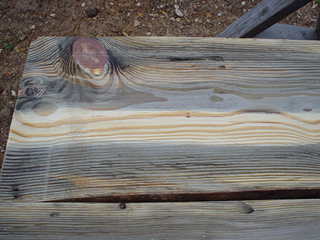View attachment 199000
I assume checking means cracking, now in the event of staining, is that to say the wood grain would become more pronounced, or the entire wood color may darken?
Yes, checking means cracking, and it doesn't happen overnight. As the tree dries it will check, from the center of the tree outward. The center, or what is known as the pith is where most of the tension is. Most sawyers approach this by either cutting out the pith, or box hearting in, meaning they put the pith in the middle of a beam and center it on both ends the best they can.
With wide boards it is often desirable to cut the pith out completely leaving clear wood on each side, if you have it. If there are lot of branches on the log, you will see those spike to the center of the tree, and what creates knots.
Trees will start checking as they dry, but remember it takes a massive amount of time to dry wood, approx. 1" per year. Within a given amount of time they will reach their equilibrium and slow way down, and most people try to wait until the wood is at least 15% before using, and down around 10% is typically good enough for furniture. That said, you can build with green wood and people do all the time, just need to account for settling. These numbers are not science, and vary.
Even if your logs were sitting after they were felled, for 2-3 months, I wouldn't worry too much about it. What I would worry about is once you mill them up, make sure you have them sticker'd good or they will bow, twist, check, etc...while they dry. With quality wood like walnut and cherry, you should make sure they have time to dry before using them. Make sure you paint the ends when you mill it also.
Lastly, the stain is often referred to as "blue stain", and is caused by a few different factors. Some is caused from beatles that live under the bark, and lodgepole pine sees this often. Most pine will stain some, given the opportunity, and it doesn't change the quality of the wood, only the looks. Some people don't like it, some people will be extra for it. It is considered rustic also. This is what it looks like:
My $0.02, worth what you paid for it...




























































